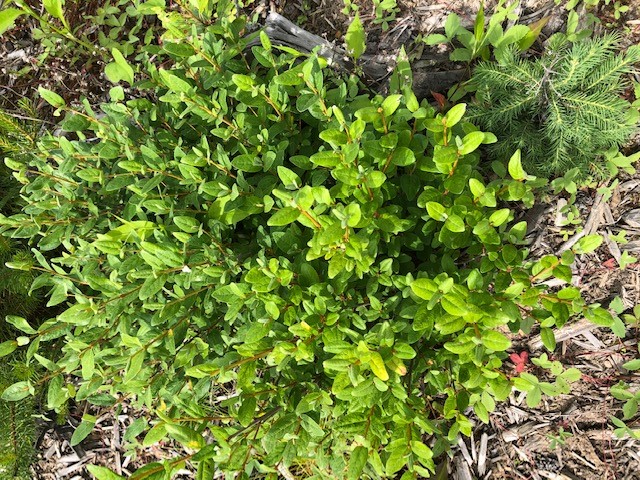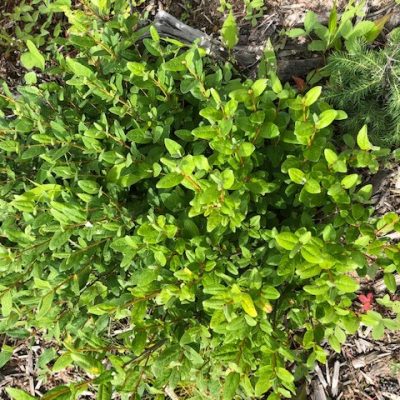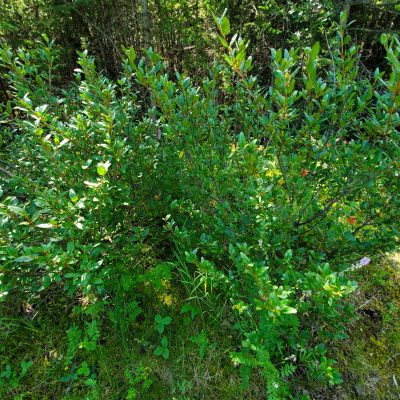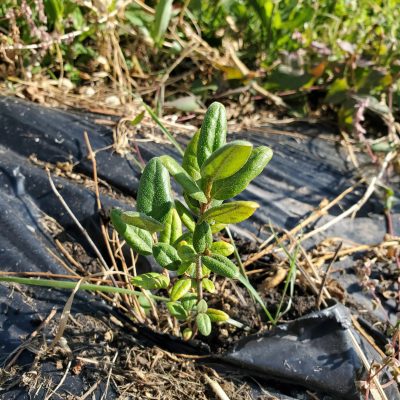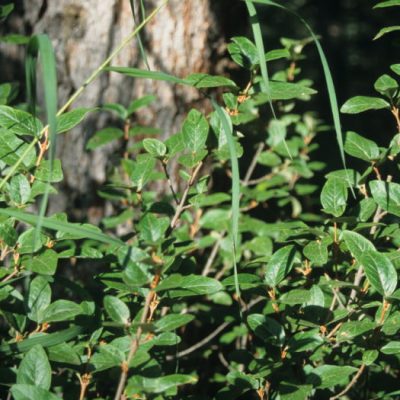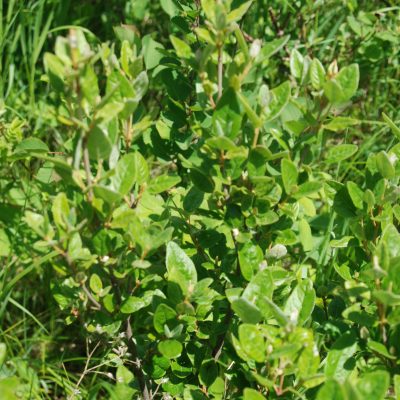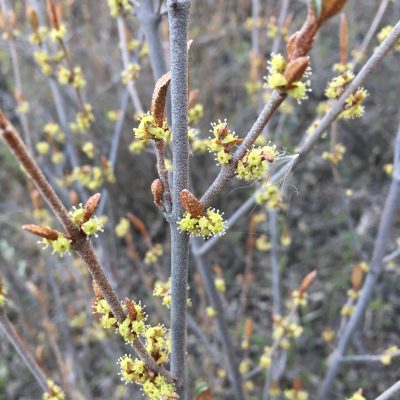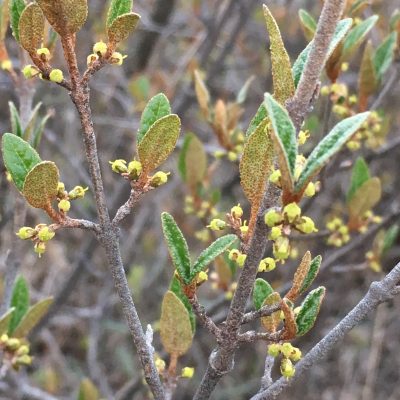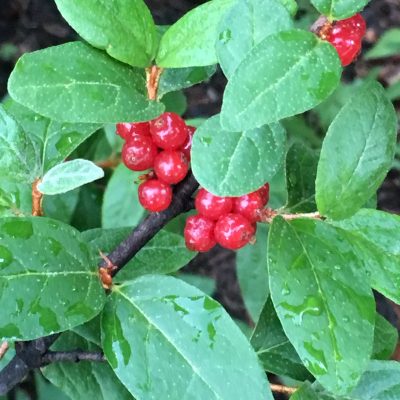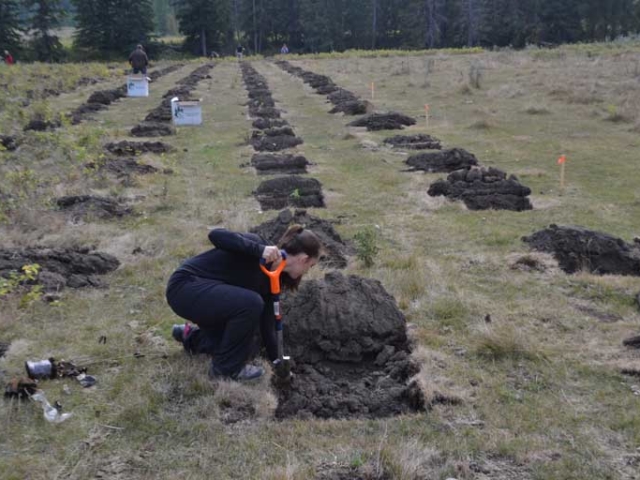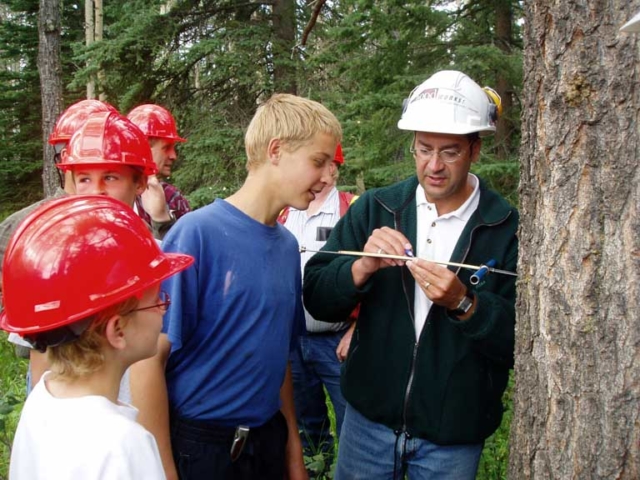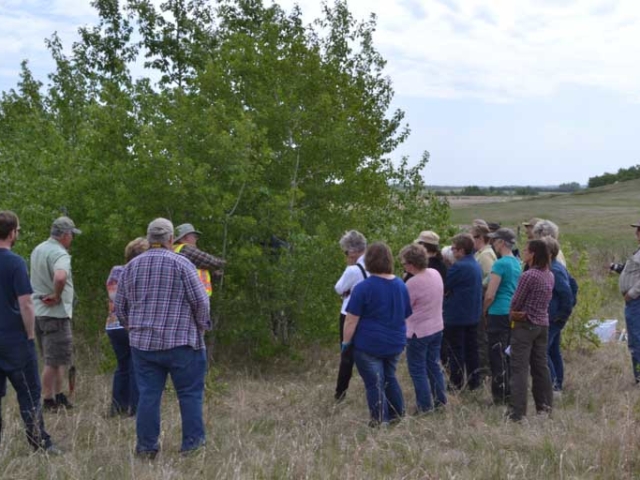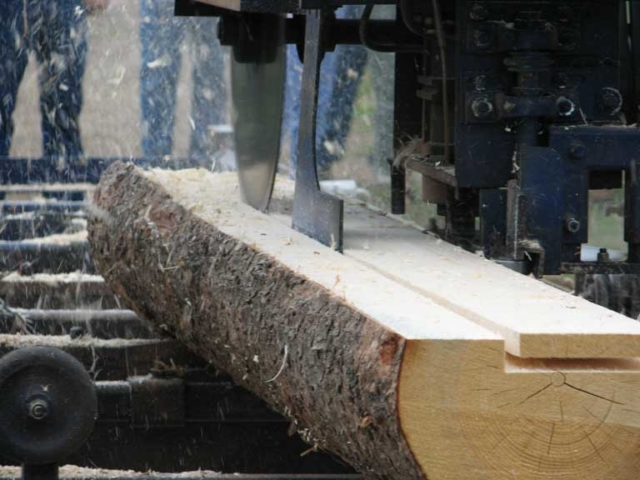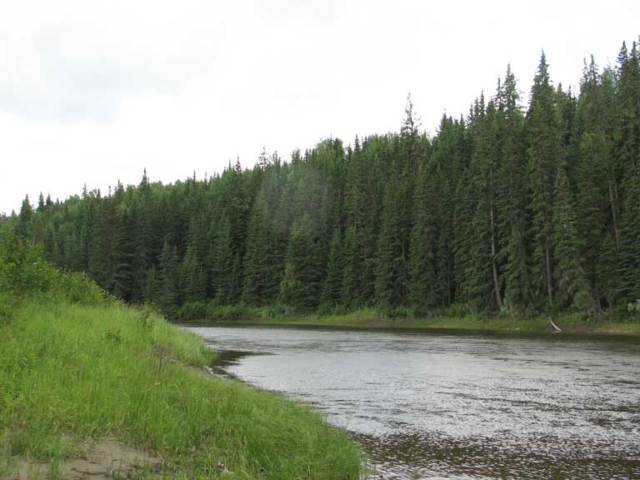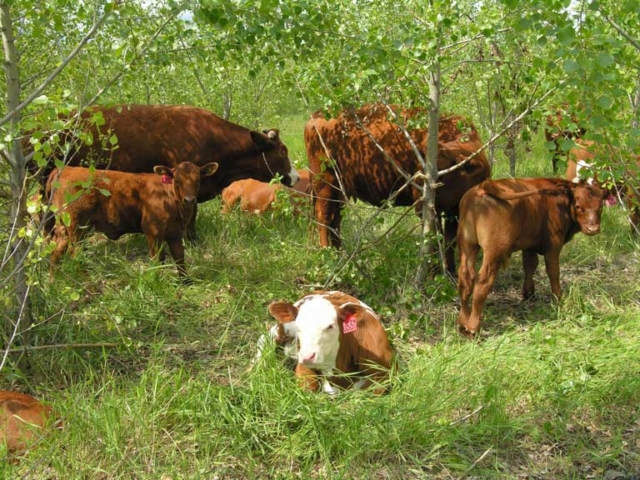Description / Details
Canada buffaloberry (Shepherdia canadensis)
Canada buffaloberry is a short shrub with leathery green leaves, commonly found in the understory or edges of forests across the province. It is a nitrogen fixer, and tolerant of a range of moisture conditions and soil types. Its flowers are among the first to bloom, providing excellent early season resources for pollinator. Its berries are far more bitter than those of silver buffaloberry, but they do sweeten after a frost or when dried. They also can be whipped up with a sweetener (e.g. sugar or white camas root) to make a foamy froth known as Indian ice cream.
While slower growing than other shrubs, Canada buffaloberry is an adaptable option for Eco-buffers or the upper edges of riparian buffers across the province, providing nitrogen, pollen, nectar, and berries to the surrounding agro-ecosystem.

